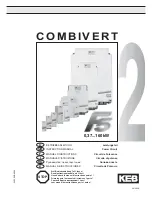
- Stop at a preset battery voltage, or
- stop (with a preset delay) after the bulk charge phase has been completed, and/or
- stop (with a preset delay) at a preset load level.
Autonomous operation when the grid fails
Houses or buildings with solar panels or a combined micro-scale heating and power plant or other sustainable energy sources
have a potential autonomous energy supply which can be used for powering essential equipment (central heating pumps,
refrigerators, deep freeze units, Internet connections, etc.) during a power failure. A problem is however that grid connected
sustainable energy sources drop out as soon as the grid fails. With a MultiPlus-II and batteries, this problem can be solved:
the
MultiPlus-II can replace the grid during a power failure
. When the sustainable energy sources produce more power than
needed, the MultiPlus-II will use the surplus to charge the batteries; in the event of a shortfall, the MultiPlus-II will supply
additional power from the battery.
Programmable
All settings can be changed with a PC and free of charge software, downloadable from our website
2.3. Battery charger
2.3.1. Lead-acid batteries
Adaptive 4-stage charge algorithm: bulk – absorption – float – storage
The microprocessor-driven adaptive battery management system can be adjusted for various types of batteries. The adaptive
function automatically adapts the charging process to battery use.
The right amount of charge: variable absorption time
In the event of slight battery discharge, absorption is kept short to prevent overcharging and excessive gas formation. After deep
discharging, the absorption time is automatically extended in order to fully charge the battery.
Preventing damage due to excessive gassing: the BatterySafe mode
If, in order to quickly charge a battery, a high charge current in combination with a high absorption voltage has been chosen,
damage due to excessive gassing will be prevented by automatically limiting the rate of voltage increase once the gassing voltage
has been reached.
Less maintenance and aging when the battery is not in use: the Storage mode
The Storage mode kicks in whenever the battery has not been subjected to discharge during 24 hours. In the Storage mode float
voltage is reduced to 2,2V/cell (13,2V for 12V battery) to minimise gassing and corrosion of the positive plates. Once a week the
voltage is raised back to the absorption level to ‘equalize’ the battery. This feature prevents stratification of the electrolyte and
sulphation, a major cause of early battery failure.
Battery voltage sense: the correct charge voltage
Voltage loss due to cable resistance can be compensated by using the voltage sense facility to measure voltage directly on the
DC bus or on the battery terminals.
Battery voltage and temperature compensation
The temperature sensor (supplied with the product) serves to reduce charging voltage when battery temperature rises. This is
particularly important for maintenance-free batteries, which could otherwise dry out by overcharging.
Two DC outputs for charging two batteries
The main DC terminal can supply the full output current. The second output, intended for charging a starter battery, is limited to
4A and has a slightly lower output voltage (12V and 24V models only).
2.3.2. Li-ion batteries
Victron LiFePO4 Smart batteries
Use the VE.Bus BMS
2.3.3. Other Li-ion batteries
Please see
https://www.victronenergy.com/live/battery_compatibility:start
MultiPlus-II 48V 3kVA 120V
Page 3
Description







































